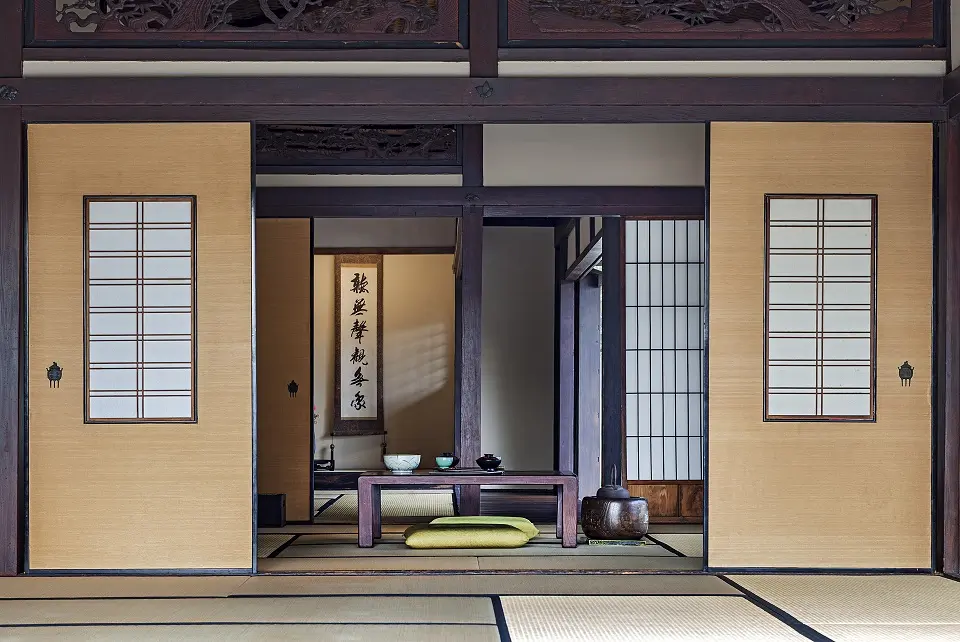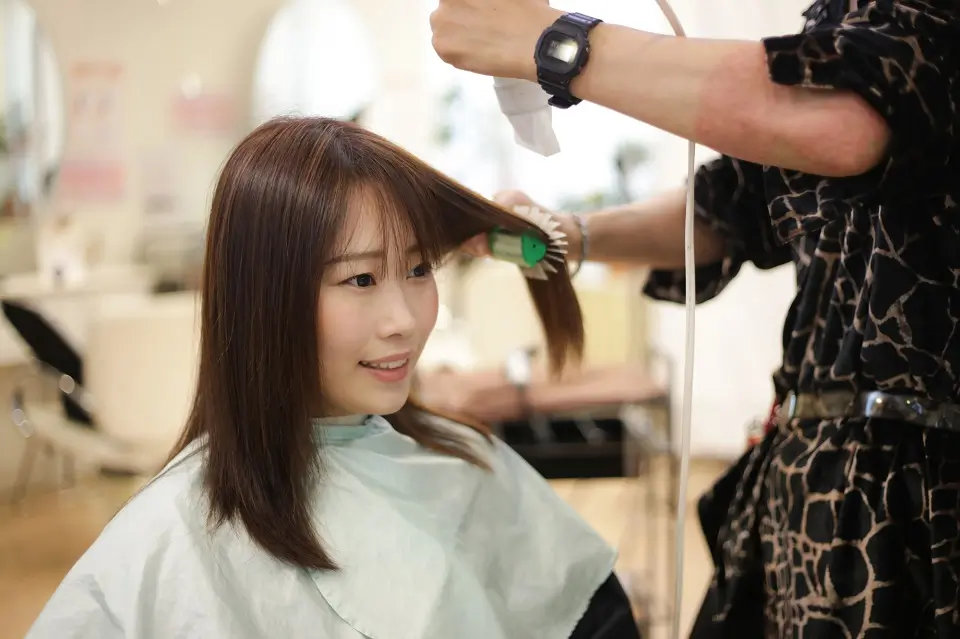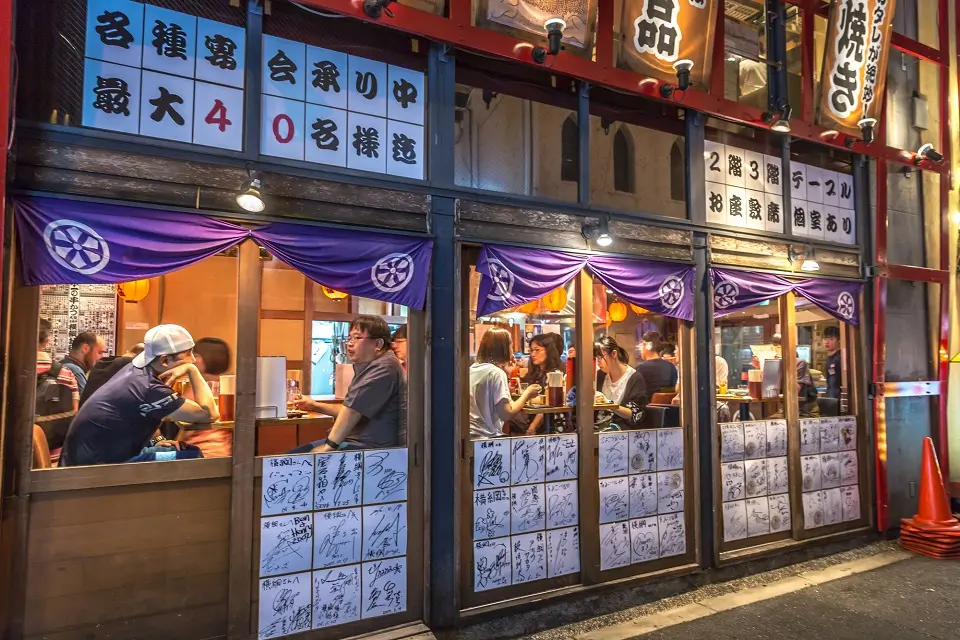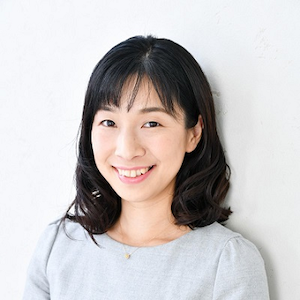Cost of Living in Tokyo – 2023 Guide

As a foreigner, if you are moving to Tokyo, one of your first queries would probably be about the cost of living in Toyo, including the rent, and whether living in Tokyo is affordable.
From concrete jungles to beautiful nature, Japan has a lot to treat the eyes. However, business-wise and job prospectuses-wise, it’s impossible to ignore Tokyo.
After all, while Tokyo is the world’s largest city by population, it is also the largest urban economy in the world by gross domestic product. So, there is a high chance that a foreigner heading to Japan may end up in Tokyo sooner or later. This is why this guide discusses the minimum cost of living in Tokyo. Moreover, we will also discuss ways to cut down your expenses for living and working in Tokyo.
(While you read about the cost of living in Tokyo, you may also like to know about software engineers’ salaries in Tokyo and Japan.)
Are Surveys about the Cost of Living Reliable?
Tokyo is one of the most expensive cities in the world for foreign expats. However, going as per the surveys may be misleading about the cost rankings.
For example, in 2020, Tokyo was ranked as the third most expensive city in the world on Mercer’s Cost of Living Rankings. However, the same ranking of 2022 showed Tokyo as the 9th costliest city in the world. What dramatic changes can make a city’s rank for the cost-of-living change from 3rd to 9th place in just 2 years? None, practically. The surveys represent a small set of people and often may be misleading.
In this article, I will discuss the real cost of living in Tokyo with actual data. If you are moving to another city other than Tokyo, you can check the article about the cost of living in Japan.
(Note: This article used an exchange rate of 1 US$ = 110 JPY. The exchange rates change daily, and the reasoning behind using this exchange rate is that apart from 2022 to early 2023, the average exchange rate during the past 10 years was approximately at this level). We have sometimes rounded the US dollar amounts in this article.
Cost of Taxes
Most of the time, we ignore taxes while talking about the cost of living—however, quite often, the money outflow in taxes may be even more than the rent we pay. So, let’s talk about individual taxes in Japan first.
Please note that apart from some differences in some tax heads, most taxes in Tokyo would be the same as what you would pay anywhere in Japan.
Type of Taxes in Japan
- National Income Tax
- The Resident of Inhabitant Tax
- Social Security
- Consumption Tax
National Income Tax
Income tax in Japan is progressive and increases with the increase in income, which your employer will deduct from your income every month during the calendar year from January 1st to December 31st.
There are 7 income slabs with increasing percentages of the income tax, which are as follows:
| Taxable Annual Income JPY) | Income Tax % |
|---|---|
| JPY 1-1,950,000 (US$ 1 to US$ 17,727) | 5% |
| JPY 1,950,001 to 3,300,000 (US$ 17,727 to US$30,000) | 10% |
| JPY 3,300,001 to 6,950,000 (US$30,000 to US$63,181) | 20% of the amount over JPY 3,300,000 |
| JPY 6,950,001 to 9,000,000 (US$63,181 to US$81,818) | 23% of the amount over JPY 6,950,000 |
| JPY 9,000,001 to 18,000,000 (US$81,818 to US$163,636 | 33% of the amount over JPY 9,000,000 |
| JPY 18,000,001 to 40,000,000 (US$163,636 to US$363,636) | 40% of the amount over JPY 18,000,000 |
| JPY Over 40,000,001 (over US$ 363,636) | 45% of the amount over JPY 40,000,000 |
However, please note that apart from Income Tax, Japan also depends on the number of dependents. Therefore, apart from a standard deduction in an individual’s taxable income, you will get a deduction for each dependent. It essentially means that your income tax reduces with an increase in the number of dependents.
You can use this income tax calculator to better understand your income tax deduction. In addition, you can use the same calculator to calculate the inhabitant tax, social security, and health insurance described below.
Residence (Inhabitant) Tax
Residence Tax, also known as the Inhabitant Tax, is also an income tax. Still, it goes to your local municipal government or ward office of metropolitan cities and not to the central government.
Like the Income Tax, the Residence Tax depends on your total income and the number of dependents. However, unlike the Income Tax, the Residence Tax does not depend on the current year’s income and is calculated based on the previous year’s income.
The Residence Tax varies from municipality to municipality or ward office to ward office. Please note that the tax calculator mentioned under income tax would calculate the inhabitant tax of Tokyo. Still, it will give you a fair, if not the exact, idea of what you can expect in the other areas of Japan.
Social Security Deductions
Social Security (Shakai Hoken) in Japan has the following components:
- Health Insurance
- Unemployment Insurance,
- Labor Insurance
- National Pension System
A 5th component, “Industrial Accident,” is added for some jobs with possibilities of job-related accidents.
For salaried employees, the employer will deduct the employee’s contribution for all the above social insurance or social security components, which is 50% of the total amount. Then, the employer will add the remaining 50% as the employer’s contribution.
You may also like to read about the year-end tax adjustment in Japan.
Consumption Tax
While all the above taxes and insurances depend on income, as the name suggests, the consumption tax is based on consumption. However, as we discuss the cost of living, we should also include consumption tax.
Every purchase of goods and services in Japan attracts a 10% consumption tax, which you must pay while purchasing anything in Japan.
Monthly Housing Cost


This article will cover the recurring monthly rent in Tokyo, not the initial costs you must incur while renting accommodation. However, you can check all the details of the various initial costs involved in our detailed guide to renting an apartment in Japan as a foreigner.
Real estate is very expensive in Tokyo, and unlike the other day-to-day costs, which you can manage to change anytime with better planning, you need good planning before you decide on a place to live. Poor planning or a hasty decision about your place to stay can dramatically increase your cost of living.
As per the July 2020 data from the National Association of Real Estate Transaction, inside the 23 wards of Tokyo, the average monthly costs you will incur are as follows:
| Type | Area (sq. meter) | Average Monthly Cost |
|---|---|---|
| 1-room studio | 13-20 | JPY 65,400 (US$ 595) |
| 1-room with separate kitchen and/dining | 13-30 | JPY 74,400 (US$ 673) |
| 1-bedroom with living and dining room with kitchen | 25-30 | JPY 105,000 (US$ 955) |
| 2-bedrooms with living and dining room with kitchen | 40-80 | JPY 158,800 (US$ 1,444) |
| 3-bedrooms with living and dining room with kitchen | 70 or more | JPY 204,100 (US$ 1,855) |
However, considering the convenience of one of the most efficient public transport systems globally and the connectivity of the Tokyo metropolitan area, you can significantly cut down the housing cost by living in the neighboring prefectures, i.e., Chiba, Saitama, or Kanagawa. To know more, you can check the following guides on EJable:
Cost for Utilities
Like everywhere, in Tokyo, you must separately pay for the utilities, i.e., electricity, gas, and water, every month. The cost depends on an individual and family’s average monthly consumption.
Still, as per the January 2023 data of the Japanese government’s official statistics, the average monthly cost of these utilities in Tokyo is JPY 26,856. Out of this total, electricity is the major cost, with an average monthly cost of JPY 13,965, followed by gas at JPY 6,738 per month and water and sewage at JPY 4,404 per month. There is an additional average monthly cost of JPY 1,748 for heat and light sources, e.g., kerosene for heaters.
A further breakup of the monthly utility cost is as follows:
| Utility | 2-Person Family | 3-Person Family | 4-Person Family | 5-Person Family |
|---|---|---|---|---|
| Electricity | ¥13,809 | ¥17,965 | ¥18,988 | ¥21,058 |
| Gast | ¥7,258 | ¥8,714 | ¥8,094 | ¥8,384 |
| Water & Sewage | ¥4.084 | ¥5.607 | ¥6,548 | ¥8,617 |
| Others | ¥2,400 | ¥2,538 | ¥1,689 | ¥2,044 |
However, for a single person, the monthly utility cost is generally lower because when the person is out of the home, there is no one else to use any of the utilities, especially electricity, which is the biggest component of your monthly utility costs. Using the Tokyo Electric Power Company (TEPCO) guide, you can calculate your electricity bill.
You can also check more details about Tokyo’s utility costs here.
House Furnishing Cost
There are few options for getting furnished accommodation in Tokyo, and you will need to incur the initial cost of furnishing your place of stay.
While there are high-end furniture stores like IDS Otsuka, including their online store, you can have many other affordable options to buy furniture in Tokyo.
Buying secondhand furniture and other household appliances is the cheapest option for furnishing your apartment.
As a foreigner, you may doubt going for secondhand items, but you can rest assured that you can get very good quality by going to the right places.
Options for Secondhand Furnishing Options in Tokyo
You can drastically reduce your house furnishing costs in Tokyo by opting for secondhand items. There are various options and sources to acquire secondhand furnishings in Tokyo, where you can get quality items. Following is the list of the helpful sources for you:
Recycle Centers of Local Ward
Our guide for garbage disposal in Japan mentioned the disposal of oversized items (Sodai Gomi). People often dispose of furniture and other appliances in very good condition for various reasons, such as the item may not fit at their new accommodation, or they are moving out and need to dispose of such items.
Such large items in good condition are kept at the recycling centers of Tokyo’s various wards recycle centers. You can visit your local ward’s recycling centers to buy from there. Some of such recycling centers are as follows:
- Shibuya recycle center
- Minato recycle center
- Shinjuku recycle center
- Meguro recycle center
- Setagaya recycle center
- Chuo recycle center
- Chiyoda recycle center
You can also check with the ward office to see if they have such a center if you are in some other ward of Tokyo apart from the above.
Chain Stores for Recycled Household Goods
Following are some of the main chains of stores from where you can buy good quality items to furnish your place:
- “Off House” stores of Hard Off Group
- 2nd Street
- Treasure Factory
- Moguland Recycle Shops
- Tokyo Recycle Imption
- Jungle Stock Tokyo Recycle Shops
Local Recycle Stores
Apart from some of these large secondhand store chains, you can find many large and small local second-hand goods shops in your neighborhood. The best way to find these is by searching recycle stores on Google for your area or asking your neighbors or friends living in your locality in Tokyo. However, some of such large shops are as follows:
- Soko Seikatsukan store in Edogawa-Ku
- 2nd store recycle thrift family in Nerima-Ku
- Recycle garden in Yoyogi
- Recycle Mission Meguro-dori
Affordable Furniture and Home Appliance Stores in Tokyo
Tokyo also has stores of some large chains for buying new furniture and appliances at quite affordable costs. Some of these are as follows:
Electric and electronic appliances are not very expensive in Japan, and you can further cut down the cost by not going for the latest model, but models launched one or two years back. Some of the large electric and electronic store chains are as follows:
Overall, if you go for the cheapest options, the cost of furnishing a small apartment for a single person in Tokyo can be as low as JPY 100,000 to 125,000 or roughly US$ 1,000 to US$ 1,200. However, this estimate is only if you go for mainly secondhand furnishings.
If you are going for new items from some of the affordable chain stores, you can furnish your apartment comfortably by spending JPY 200,000 to 300,000 (US$ 1,800 to US$ 2,750) for a single person in Tokyo or, in fact, anywhere in Japan.
Phone and Internet Costs


People do not generally use landlines at home in Tokyo, so your monthly cost for a phone in Tokyo will depend on the following three factors:
- Service provider (carrier)
- Plan you subscribe to
- Monthly usage
Until a few years back, Japan had three large mobile phone carriers: NTT DoCoMo, au, and SoftBank. However, the lack of competition and the Japanese consumers’ loyalties to their carriers ensured quite expensive monthly plans for mobiles.
However, more service providers like Rakuten and Yahoo Japan have recently ensured more competition and cheaper monthly plans. These plans change with time, and you must contact the service providers to learn about the current plans to compare and decide which one suits you the best.
However, as a ballpark range, you should budget for JPY 3,300 to JPY 7,500 for your mobile phone cost per month. However, you can have monthly plans as inexpensive as approximately JPY 1,100 for more affordable service providers like Rakuten.
Similarly, the monthly cost of the internet depends on the service providers and accommodation. If you rent an apartment in modern apartment buildings or go for an apartment from companies like UR, the apartment will come equipped with an internet connection. In such apartments, the monthly bill for the internet would be very inexpensive, and you may have to pay as low as JPY 2,000 per month for unlimited use.
However, if you use an internet connection, your monthly cost will range from JPY 4,200 to JPY 6,600 or US4 38 to US4 60.
The internet in independent houses will be more expensive, and you may have to shell out JPY 1,200 to 3,000 (US$ 11 to 27) more monthly.
Expenses on Groceries
If you eat what the Japanese eat, your monthly expenses on groceries will be quite affordable. For a single person, the average monthly grocery bill in Tokyo is on an average in the range of JPY 25,000 to 40,000(US$ 230 to approximately US$ 365).
However, if you are a vegetarian or consume more vegetables and fruits, your monthly cost for food at home will be higher because vegetables and fruits in Japan are quite expensive.
If you have a big family or can buy larger quantities of groceries with a pool of friends, you can shop at stores like Costco to cut down on your monthly grocery shopping bills.
Moreover, if you plan to live in the suburbs of Tokyo, your food bills will be significantly lower.
Expenses on Consumables apart from groceries
The average cost for shopping for daily use stuff like toiletries would cost you JPY 2,000 to 2,500 (US$ 18 to 23) per month per person.
Tokyo’s Day-to-day Transportation Cost
In Japan, companies reimburse the transportation cost between home and office. This practice takes out the transportation cost burden to a great extent from the individuals. Moreover, the public transport system in Tokyo is very efficient, and people practically do not need cars for daily travel.
Public transport in Tokyo is not expensive, whether in Tokyo Metro, JR, or local buses. For example, you can travel from Nihombashi to Shibuya by subway, paying JPY 210 (US$ 1.9) for 20 minutes of travel.
Traveling by JR is even cheaper than the Tokyo Metro. However, please remember that taxis are quite expensive and can leave a hole in your pocket if you try to catch a cab for a long distance. The standard taxi tariffs in Tokyo are as follows:
- The minimum taxi fare for the first two kilometers: ¥710 (US$6.45)
- Each additional 288 meters: ¥90 (US$0.82)
- 105-second wait: ¥90 (US$0.82)
During the night, the taxi fare is market up by 20%.
However, sometime before the Tokyo Olympics 2020, some taxi operators started charging the minimum fare of JPY 400 (US$ 3.6) for 1 km instead of 2 km in downtown Tokyo.
Traveling to other cities from Tokyo is quite expensive if you travel by Shinkansen for leisure activities.
Cost for Clothing and Drycleaning
Before the 2011 Tōhoku earthquake and tsunami, the cost of purchasing and maintaining clothes was very high in Japan, especially for men and in metro cities like Tokyo. The reason was Japan’s formal work culture.
Before 2011, all male workers, from taxi drivers to all other professions, except those engaged in manual labor, had to wear professional suits and ties daily.
In cities like Tokyo, people use cleaning shops for all clothes except casual clothes and innerwear. Therefore, while the clothing purchase costs were quite high, the cost of maintaining those was also very high.
After 2021, Japan introduced CoolBiz (Cool Business) to cut down on formal wear to move towards semi-formal with no mandatory suits and ties, and at many workplaces, even casual wear. This change substantially cut down the costs for clothes purchases and costs incurred for cleaning shops.
The next major drop in this cost came with COVID hitting the world and many companies going for work-from-home or hybrid working mode.
However, imported clothing brands are generally quite expensive when you peek into any brand stores in places like Tokyo’s Ginza district. However, there are many affordable options for clothing, the most famous being UNIQLO stores in Tokyo. By the way, UNIQLO’s flagship store is also in Ginza and is the largest one in the world with 12 floors.
Cost for Haircare


There are several options for haircuts and coloring, etc., in Tokyo. The price range can be very wide.
The modern salons, mainly run by younger Japanese and meant for younger people, may cost JPY 3,500 to 7,500 or approximately US$ 32 to US$ 68 for a haircut and a similar range for hair coloring, depending on the area and type of salon.
However, you can find small traditional salons run by older people, which may cost around JPY 2,000 for a haircut and a similar price tag for hair coloring. Though these salons may not give you the services of very funky hairstyles, for good, professional-looking hair, you will find the same quality with very courteous service as in any high-end salon.
The cheapest hair-cutting option in Tokyo is the QB House chain, which you can find near most subway stations. They cut the hair in 10 minutes by charging a flat JPY 1,000 (US$ 9). However, this chain is mainly for men.
Gymnasium Expenses
People who are particular about physical workouts can find convenient 24-hour gyms in Tokyo. These chains offer members the facility to work out in any of their branches in Tokyo. Such gyms cost approximately JPY 10,000 (US$ 90 to 95) per month. However, you can find local gyms that do not offer 24-hour services.
Cost of Eating Out in Tokyo


Eating out in Japan in Japan is more common than in many other countries.
Tokyo offers a wide variety of options, from the type of restaurants to the type of food. While there are very high-end expensive restaurants, you will also find quite affordable restaurants with very good quality food and sometimes a better quality of fun.
If you plan to eat out with family or friends during the evening, try Japanese pubs called Izakaya in Japanese. Normally, an Izakaya meal in Tokyo costs JPY 2,500 to JPY 4,000 per person or approximately US$ 23 to 36. Of course, the cost of your meal will depend a lot on the amount of alcoholic beverages you end up consuming.
For dinners, you will also find several joints offering a very affordable fixed price for all you drink (Nomihodai in Japanese) in an allotted time, typically 90 minutes to 120 minutes. The price for Nomihodai ranges between JPY 1,500 and JPY 3,000, or US$ 13.5 to USD 27.5).
You can also find places in Tokyo with Nomihodai and Tabehodai, meaning all-you-can-eat.
Foreigners who wish to interact with Japanese and eat at home cooked food at their home, you can explore the services of Nagomi Visit. The meals cost JPY 5,500 for adults and JPY 4,000 for kids from 5 to 12 years of age. You can also request to cook with the host families together.
Expenses for Leisure Travel
Travel costs to other cities for leisure will depend on the mode of travel and the places you choose to stay.
Mode of Travel and Cost
The most expensive but fastest mode is generally a bullet train (Shinkansen). Many times, it’s a faster option than air travel because Shinkansen station is downtown, unlike the airports on the outskirts.
To give you the cost estimate, a Tokyo to Osaka one-way ride of 2 hours 27 minutes by Nozomi Shinkansen costs JPY 14,520 or approximately US$ 132 for approximately 500 km.
Compared to the Shinkansen, the night bus from Tokyo to Osaka costs JPY 2,900 to JPY 7,000 or approximately US$ 26 to US$ 64. However, booking a bus closer to the departure days would cost you much less.
Cost of Hotels
The most expensive hotels, apart from the normal luxury hotels, are Japanese-style hotels called Ryokan, which are like Japanese-style houses. The pricing for a night, including food, can be from JPY 15,000 (US$ 135) to JPY 70,000 (US$ 640) or even higher in peak seasons.
However, you can find many budget hotels, including business hotels, at affordable prices, costing 10,000 to JPY 20,000 or approximately US$ 90 to 180.
Airbnb in Japan is another option for finding cheaper or more luxurious accommodations for a group.
Tips for Cutting Down the Cost of Living in Tokyo
The cost of living depends on the living style. And though you may find that the cost of living is high in Tokyo, it can very well be affordable.
For example, as per the Japanese government’s statistics for February 2023, the average household income of two or more persons was JPY 557,655 (approximately US$ 5,235), and the monthly consumption expenditures per household were JPY 272,214 (approximately US$ 2,475).
The data shows you can have a comfortable life even if you earn more than the average monthly consumption expenditure. However, to do that, you must budget carefully and have discipline in spending practices. Here are some tips for cutting down your cost of living without sacrificing the quality of life in Tokyo or even in other cities in Japan:
Seasonal Discount Sales
The seasonal discount sales can save you a lot of money shopping, mainly for clothes.
Most clothing and other accessory stores have bargain sales during season change. However, the biggest sales are summer sales and winter sales. You will also find New Year’s sales where you can buy many other items besides clothes at bargain prices.
Buying in Bulk
Pooling in with friends to buy items in bulk from places like Costco is another option to reduce costs.
You can find some other wholesale markets and stores in Tokyo here.
Living in suburbs
As mentioned under the housing cost section, you can save significantly on the cost of your accommodation by taking advantage of a very efficient public transport system in Tokyo by choosing to live in the suburbs of Tokyo.
Learning Japanese
I know you would say what the Japanese language has to do with the cost of living. Yes, it does. Many services in English are generally more expensive than those from service providers who can’t offer English support.
Moreover, knowing Japanese would make you interact with locals more effectively to gain the advantage of their knowledge of places and ways to cut down your cost of living.
Not Depending on Imported Goods
More dependency on imported goods, especially from developed countries, can significantly increase your cost of living. Unlike smaller cities, Tokyo offers abundant availability and supply of foreign goods, including food. However, you will find such goods quite more expensive than the local goods.
However, one interesting thing is that many imported items for food and even electronics from some Asian countries are cheaper than the same produced locally in Japan, even by the same producer or manufacturer.
Better route planning for local transport
With little attention to the train lines or buses you are taking for the same route for your city travel, you can significantly cut down on your local travel costs. Services like Google and local Japanese apps like Jorudan will give you multiple options for the same routes with ticket costs.
Don’t Ignore Monthly Train Pass
If you work from an office, please do not ignore purchasing the monthly pass.
An important tip is to check the monthly pass pricing from the previous stations from the origin to a couple of the next stations from the destinations.
If you find the pricing for a longer route on the same track, then it is better to buy the monthly pass for that longer route. With such a pass, you can travel anywhere between those stations during the month, including weekends and national holidays.
Buy at Local Vegetable Shops
Local vegetable shops are always cheaper than shopping for the same vegetables in a supermarket nearby. Therefore, using your neighboring local vegetable shops will help bring down your monthly costs while you enjoy those fresh vegetables.
Avoid Convenience Stores
Well, you can’t actually avoid convenience stores in Japan. However, if you can buy the same item in a nearby supermarket, it will save you money. Remember that while convenience stores provide you with the convenience of 24-hour services, they place a premium on the prices they offer.
100-yen Shops
As mentioned earlier in this article, you can save a lot by exploring the 100-yen shops around you to see what items you can buy from there.
Avoid Traveling in Peak Seasons
If you plan to travel outside Tokyo, avoiding peak seasons such as Golden Week, Obon, and New Year Holidays is advisable. This is because travel and accommodation costs become multiple times what you normally spend.
Is Tokyo too Expensive?
In conclusion, living in Tokyo can be a rewarding experience but costs comparatively more, from high rents to expensive groceries and utilities, etc.
At face value, the cost of living in this bustling metropolis of Tokyo may seem overwhelming. However, there are ways to make it more affordable. Consider living in the suburbs, where rents are lower, or explore shared housing options to reduce expenses. Take advantage of discounted stores and local markets for groceries, and practice smart energy usage to keep utility bills in check.
When dining out, opt for budget-friendly eateries and street food stalls that offer delicious meals at reasonable prices. By adopting these strategies and being mindful of your spending, you can find a balance between enjoying Tokyo’s vibrant lifestyle and managing your finances effectively.
Remember, with proper planning and resourcefulness, you can drastically reduce your cost of living in Tokyo and make living in Tokyo financially sustainable and culturally enriching at a very affordable cost.


A bilingual native Japanese, Naoko accumulated 14 years of experience in multinational companies’ diverse fields like HR, accounting, and sales support after graduating from the State University of New York. She is a co-founder of ReachExt K.K. and EJable.com.

